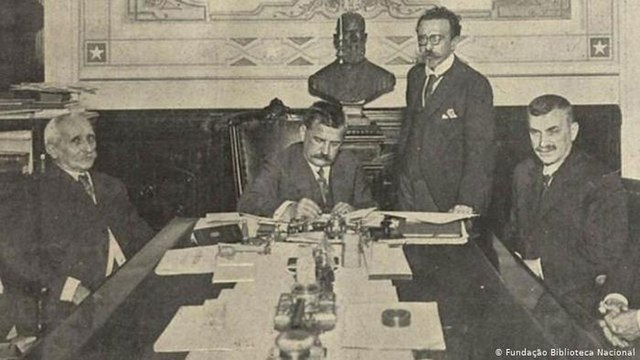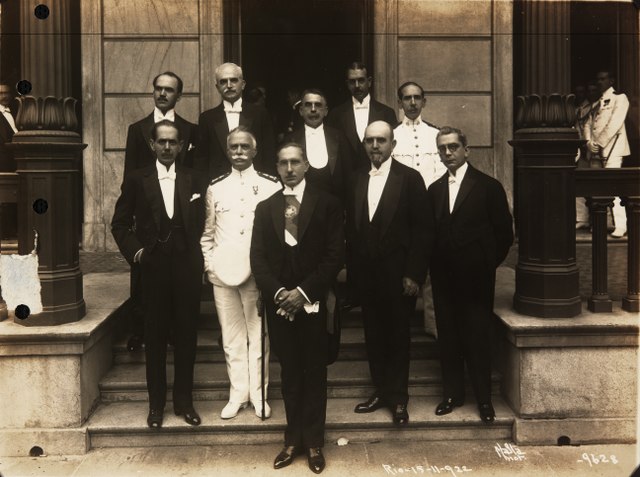The Federalist Revolution was a civil war that took place in southern Brazil between 1893 and 1895, fought by the federalists, opponents of Rio Grande do Sul state president, Júlio de Castilhos, seeking greater autonomy for the state, decentralization of power by the newly installed First Brazilian Republic and, arguably, the restoration of the monarchy.
Gumercindo Saraiva and maragato commanders
Gaspar da Silveira Martins, monarchist and founder of the Federalist Party.
Gumercindo Saraiva, leader of the Maragatos.
Trench on the sete de setembro st. during the siege of Bagé, 1893.
The First Brazilian Republic, also referred to as the Old Republic, officially the Republic of the United States of Brazil, refers to the period of Brazilian history from 1889 to 1930. The Old Republic began with the deposition of Emperor Pedro II in 1889, and ended with the Brazilian Revolution of 1930 that installed Getúlio Vargas as a new president. During the First Brazilian Republic, Brazil was dominated by a form of machine politics known as coronelism, in which the political and economic spheres were dominated by large landholders. The most powerful of such landholders were the coffee industry of São Paulo and the dairy industry of Minas Gerais. Because of the power of these two industries, the Old Republic's political system has been described as "milk coffee politics."
The Proclamation of the Republic, by Benedito Calixto.
President Venceslau Brás declares war on the Central Powers, October 1917.
Constitution of the United States of Brazil, 1891. National Archives of Brazil.
President Artur Bernardes (1922–1926) and ministers of state, 1922. National Archives of Brazil.








